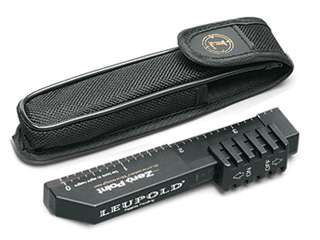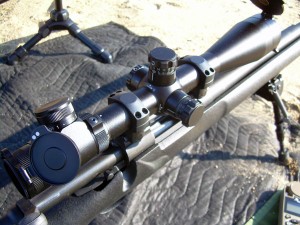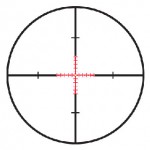Leupold Magnetic Illuminated Bore Sighter
- October 25th, 2011
- Write comment
Every once in a while we find products that work great and in turn makes our job easier. Leupold’s Magnetic Bore Sighter is one terrific product. It’s easy to use even for novice, not an arm and a leg dollar wise and it’s paid for itself in wasted time and ammo at the range.  Using the bore sighter is easy as pie. You simply flip the on switch on the side and stick it on the end of the barrel. When you look through your scope it presents an illuminated reticle pattern with a center cross hair and all you do is turn your windage and elevation knobs to center the crosshair. Yes, it’s that easy and it eliminates the need for multiple tools, plastic adaptors and the like. It’s work on anything just as it sits. We’ve had one here in the shop for 4 years and mounted countless scopes with it still on the original battery which seems like it will last forever. It’s also great at the range if you forget where your original zero is. Just pop it on the end of the barrel and reset your knobs. Bingo. Done. To us it’s an indispensable tool of the trade and one of the best pieces of kit we have had the pleasure to use. Nice carry case is included.
Using the bore sighter is easy as pie. You simply flip the on switch on the side and stick it on the end of the barrel. When you look through your scope it presents an illuminated reticle pattern with a center cross hair and all you do is turn your windage and elevation knobs to center the crosshair. Yes, it’s that easy and it eliminates the need for multiple tools, plastic adaptors and the like. It’s work on anything just as it sits. We’ve had one here in the shop for 4 years and mounted countless scopes with it still on the original battery which seems like it will last forever. It’s also great at the range if you forget where your original zero is. Just pop it on the end of the barrel and reset your knobs. Bingo. Done. To us it’s an indispensable tool of the trade and one of the best pieces of kit we have had the pleasure to use. Nice carry case is included.




